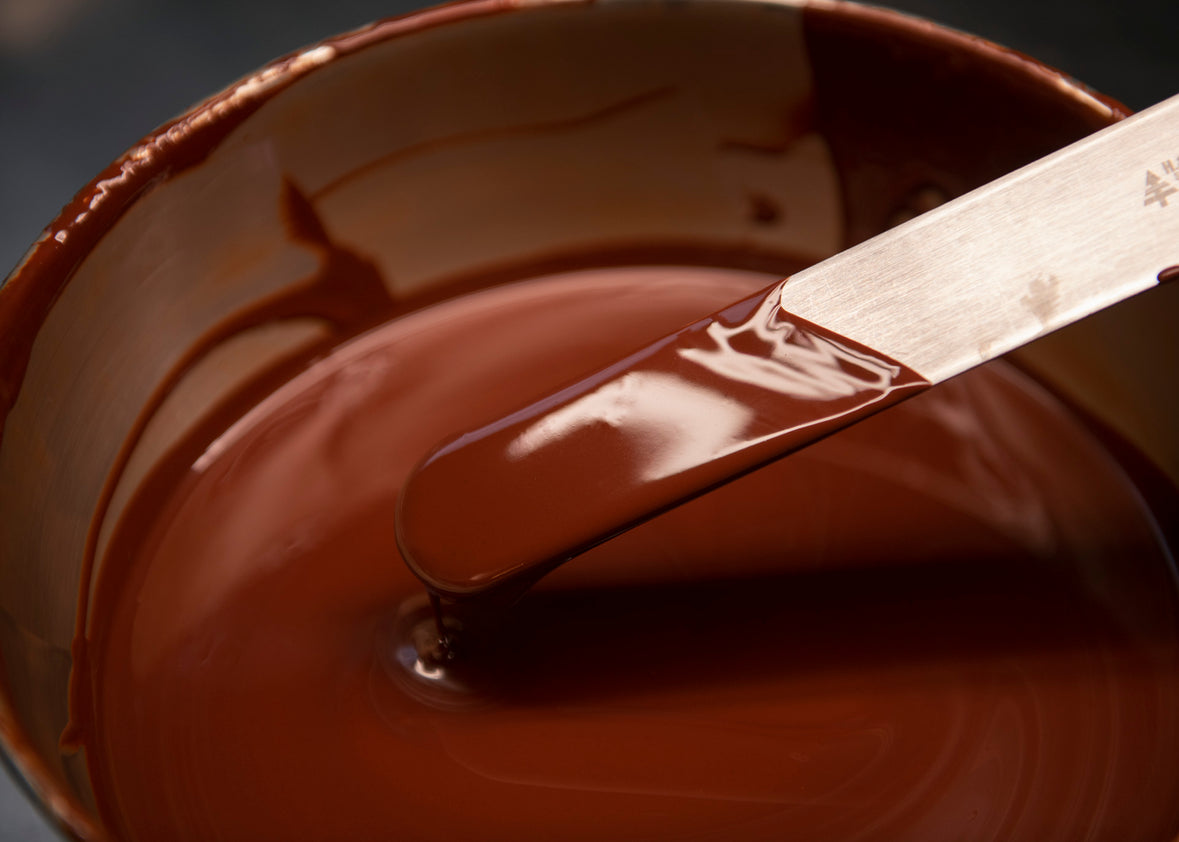The cocoa price increases have now reached us as well. The prices of our chocolate coating and beans were always well above the market price, approximately 3-5 times higher than conventional cocoa.
Our prices remained stable for a long time because we work with Holger In't Veld, who works with a small importer who, in turn, collaborates with small collectives from regions other than the major West African regions , and we require comparatively small quantities. The small, nature-oriented farmers often don't have as much difficulty as the larger ones who cultivate their cocoa as monocultures on a large scale, partly because cocoa was sold too cheaply for a long time.
Well, the industry is now also buying our partners' already more expensive beans, which have now risen sharply again, because the market has to be served. Holger is now buying his beans at a 50% higher price.
These beans are absolutely worth it. The quality remains incredibly good, the flavors never cease to amaze us, and what Holger makes with the beans is incomparable. And since cocoa was far too cheap for a long time, these price increases may also lead to a little more appreciation and insight into how complex the process is, from cultivating the cocoa, through fermentation, roasting, transport, storage, further processing into chocolate coating, and finally, the final product (like our pralines). Less but more conscious consumption may now become more the norm. Those who carefully choose where they buy their chocolate can help avoid further supporting the degrading conditions and, in a small way, contribute to supporting structures that strive to cultivate this incomparable plant under fair and respectful conditions.
The beans for our current couvertures come from the following collectives and regions:
Bejofo from Madagascar, Lago de Yojoa from Honduras, Kamili from Tanzania, Medala from Nicaragua
We will of course continue and support these great collectives.
Nevertheless, we also have to raise our prices. We are currently still evaluating how to keep the price increase as low as possible.
Prices will be adjusted in January 2025. We'll keep you updated.
HERE IS SOME INFORMATION ABOUT THE BASIC PROBLEM
(Source WWF)
The root of the problem
A key factor in the cocoa shortage is the cultivation systems in the main producing countries. Cocoa is predominantly cultivated as monocultures, even though the plant actually thrives better in the shade of larger trees. The soils are depleted, the plants are old, and yields are modest. Because cocoa prices have been very low for a long time, many farmers have switched to other crops such as rubber. Furthermore, the impoverished farmers usually lack the money to invest in increasing soil fertility or rejuvenating plantations.
Climate change and diseases
Climate change has exacerbated the situation. More frequent droughts and heavy rainfall lead to poor yields and the spread of fungal diseases. The current El Niño phenomenon is exacerbating the problems. A serious threat is the so-called “Cocoa Swollen Shooting Virus Disease” ( CSSD ). Transmitted by mealybugs, the disease spreads rapidly in monocultures. The disease threatens the livelihoods of farmers in West Africa, leads to land conflicts, and fuels deforestation. In Ghana, the virus is already rampant on 17 percent of cultivated areas. The disease is also spreading rapidly in Côte d'Ivoire. Farmers have little to combat the virus. The only option in the event of an infection is to destroy the entire plantation.
Injustice and child labor
Despite current high prices, producers are not benefiting because their harvests are becoming increasingly meager. Many farmers, especially in West Africa, are struggling to earn a living wage. Child labor on plantations is a bitter reality. The industry faces the challenge of ensuring fair trade practices and sustained living incomes, as well as promoting sustainable farming methods to address pressing social and environmental issues.
Chocolate industry and consumers
The rising costs and scarcity of cocoa have a direct impact on the chocolate industry. Manufacturers are faced with higher production costs. This could lead to price increases. However, it is important to remember that only six percent of the sales price reaches the farmers in the growing regions. The majority goes to other players in the intermediaries, chocolate production, and retail. Following this logic, the price increases due to the more expensive raw material should not be too high.
For consumers, this means shopping more consciously and paying attention to sustainable cultivation and fair prices when purchasing. The cocoa crisis could serve as a wake-up call to intensify global efforts to combat climate change and promote fair trade conditions.
Time for change
The cocoa crisis is not only a challenge for the chocolate industry, but also a call to action. The key is to create diverse and sustainable farming systems. This includes agroforestry systems that are resilient to the effects of climate change and the spread of disease, while providing farmers with sustainable livelihoods.
It's up to us to enjoy the sweet temptation of chocolate with a sense of responsibility for people and the environment. WWF is working to establish deforestation-free chocolate supply chains. The cocoa is cultivated in the Amazon region by indigenous cooperatives in the so-called Chakra system, a particularly diverse agroforestry system. The project is being implemented on behalf of the German Federal Ministry for Economic Cooperation and Development ( BMZ ) and supported by the Deutsche Gesellschaft für Internationale Zusammenarbeit ( GIZ ). We are collaborating with indigenous organizations and partners such as the chocolate manufacturer Paccari.
